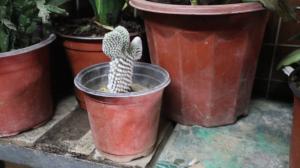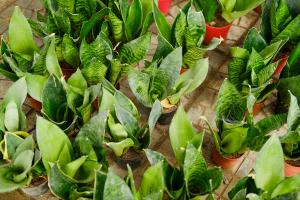How to Preserve Tomato Seeds for Next Year Planting
Tomatoes are one of the tastiest and most nutritious vegetables (or fruit, depending on who you ask) that people love to grow in their home garden. The luscious fruit is not only rich in antioxidants and vitamins but also can be eaten fresh, cooked into a pasta sauce, or preserved for later use. If you're planning to grow tomatoes again next year, an excellent way to save money is by collecting, saving, and preserving tomato seeds. In this article, we'll walk you through how to preserve tomato seeds successfully, so you can grow healthy and robust tomato plants for many seasons to come.
Step 1: Choose the Right Tomatoes
The first step to preserving tomato seeds is selecting the right type of tomato plant. Not all tomatoes are the same, and some varieties are more suitable for seed saving than others. You should avoid hybrid tomatoes as they may not produce true-to-type seedlings. Open-pollinated, heirloom, or organic tomatoes, on the other hand, are perfect for saving seeds. You can find these seeds at seed catalogs, gardening stores, or by trading with other gardeners.
Step 2: Harvest the Tomatoes
Once you have selected your tomato plants, it's time to harvest the fruits. It's best to let the tomatoes ripen fully on the vine before harvesting to ensure the seeds are mature. Cut the tomatoes in half, scoop out the seeds with a spoon, and place them in a glass or ceramic bowl. Avoid using plastic bowls as they may cause the seeds to sweat and mold.
Step 3: Ferment the Seeds
The next step is fermenting the tomato seeds. Fermentation removes the gelatinous coating around the seeds, making it easier to separate them from the pulp. To ferment the seeds, pour water over the seeds in the bowl, cover the bowl with a clean cloth or plastic wrap, and place it in a warm spot in your house for two to four days. Stir the mixture once or twice a day, and you will notice the pulp turning white and mold growing on top. Don't worry; it's a sign that the fermentation process is working. Once fermentation is complete, you can separate the seeds from the pulp by straining the mixture through a sieve or cheesecloth and rinsing the seeds under running water.
Step 4: Dry the Seeds
After you have separated the tomato seeds from the pulp, it's time to dry them. Spread the seeds on a paper towel or a fine mesh screen and allow them to air dry for one or two weeks. Make sure to place the seeds in a warm, well-ventilated location away from direct sunlight. The seeds are dry when they snap when bent instead of bending. Be patient and don't rush the drying process as it's essential for seed viability and storage.
Step 5: Store the Seeds
Once your tomato seeds are dry, it's time to store them. Place the seeds in an airtight container, such as a glass jar, plastic bag, or an envelope, and label them with the tomato variety and the date harvested. Store the container in a dark, cool, and dry place, such as a closet, pantry, or refrigerator. Make sure the container is completely dry as any moisture can cause the seeds to mold, which will reduce their viability.
Conclusion
Preserving tomato seeds is an easy and cost-effective way to ensure that you have healthy and robust tomato plants year after year. By following these five simple steps to preserve tomato seeds, you can save money on buying tomato seeds every year, maintain the flavor and quality of your homegrown tomatoes, and pass down your favorite heirloom tomato varieties to generations to come.

 how many times do yo...
how many times do yo... how many planted tre...
how many planted tre... how many pine trees ...
how many pine trees ... how many pecan trees...
how many pecan trees... how many plants comp...
how many plants comp... how many plants can ...
how many plants can ... how many plants and ...
how many plants and ... how many pepper plan...
how many pepper plan...































